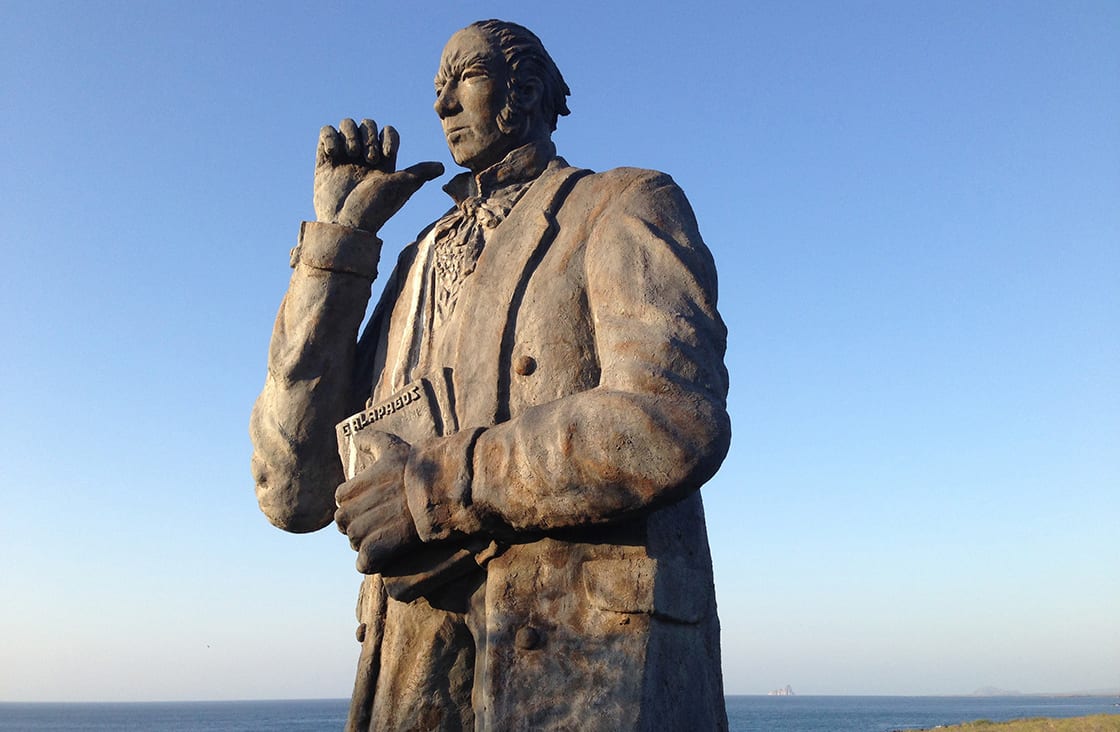
When we hear the words “Galapagos Islands”, it’s almost impossible to not think of the name “Charles Darwin”. The English naturalist and geologist is well-known for his influential contributions to evolution theory, largely from his observations of the unique species he found on the Ecuadorian Galapagos Islands in 1835. Now the two names have become impossibly intertwined- the animals he studied have taken on his name, and he has taken on the identity built by his unforgettable work. Whether you’re going to visit the Galapagos Islands or simply curious, read on for more about Charles Darwin’s natural selection theory, his time spent in the Galapagos, how the Galapagos Islands influenced his work, and how he has since influenced them.
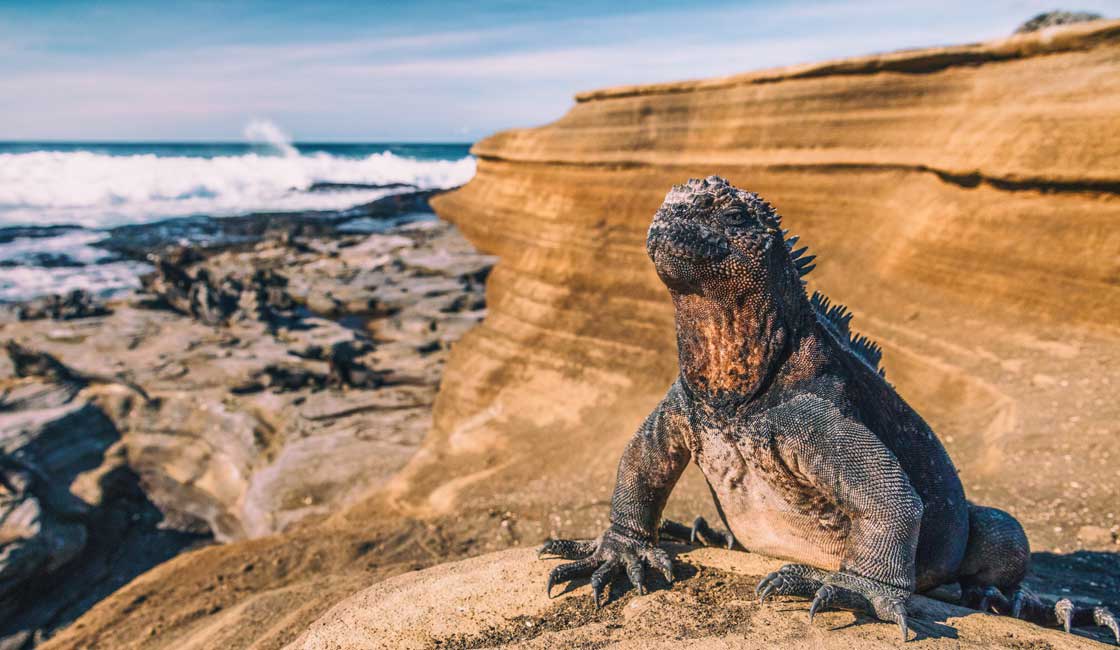
Marine Iguana
In 1831, Charles Darwin set sail on the H.M.S. Beagle, headed for South America. Having struggled with his career thus far, he took the unpaid position under the leadership of Commander Robert Fitz Roy with the intent of sailing to countries that were little known.
On September 15th, 1835, the Beagle landed on the first of the Galapagos Islands. The Galapagos Islands sit 600 miles off the coast of Ecuador, made up of 13 main islands and 7 smaller islands. Charles Darwin and the crew on the Beagle visited four of the islands over the next 5 weeks: San Cristobal, Floreana, Santiago and Isabela.
The first stop was on San Cristobal (formerly Chatham Island). Here, Darwin’s crew captured several giant tortoises for food. The tortoises here were massive, weighing over 90kg (almost 200 lbs), and big enough to be ridden like horses. He also noted a few “dull-colored” birds- these later became his famous finches!
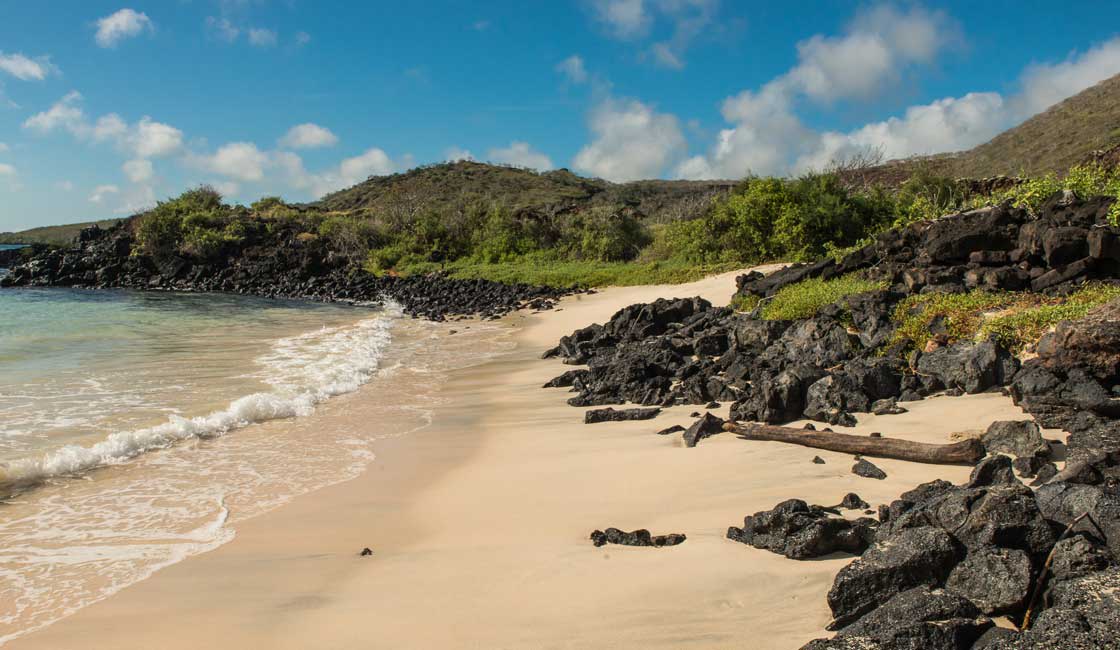
Floreana Island
Charles Darwin’s second stop was at Floreana Island (formerly known as Charles Island). Here, local prisoners told Darwin that each island had its own unique tortoise. The locals pointed out that these tortoises seemingly lived infinitely- it appeared that none of them ever died of old age, and the dead tortoises found always had a clear cause of death (such as falling from a cliff). The Englishman managing the prison, Nicholas Lawson, showed Darwin that you could tell which island each tortoise came from by looking at its shell: they were all different. The convicts regularly ate the tortoises, as well as crews of whaling and pirate ships, and they were extinct by 1846.
The third island stop was Santiago (formerly James Island). Arriving here on October 8, 1835, they found a group of Spaniards who had left Floreana to dry fish and salt tortoise meat. Here, Darwin observed the many land iguanas- or as he called them, ‘disgusting clumsy Lizards’. Unfortunately, iguanas no longer exist on this island, but at the time he recorded there being so many they didn’t have room to pitch a tent.
Charles Darwin spent the most time on Santiago island, and it was here that he began to realize the species collected on each were actually different. So far, he had gathered a variety of fish, snails, birds, reptiles and insects, but hadn’t been labeling which island they came from as he had assumed all of the islands had the same animals. He now realized this wasn’t the case.
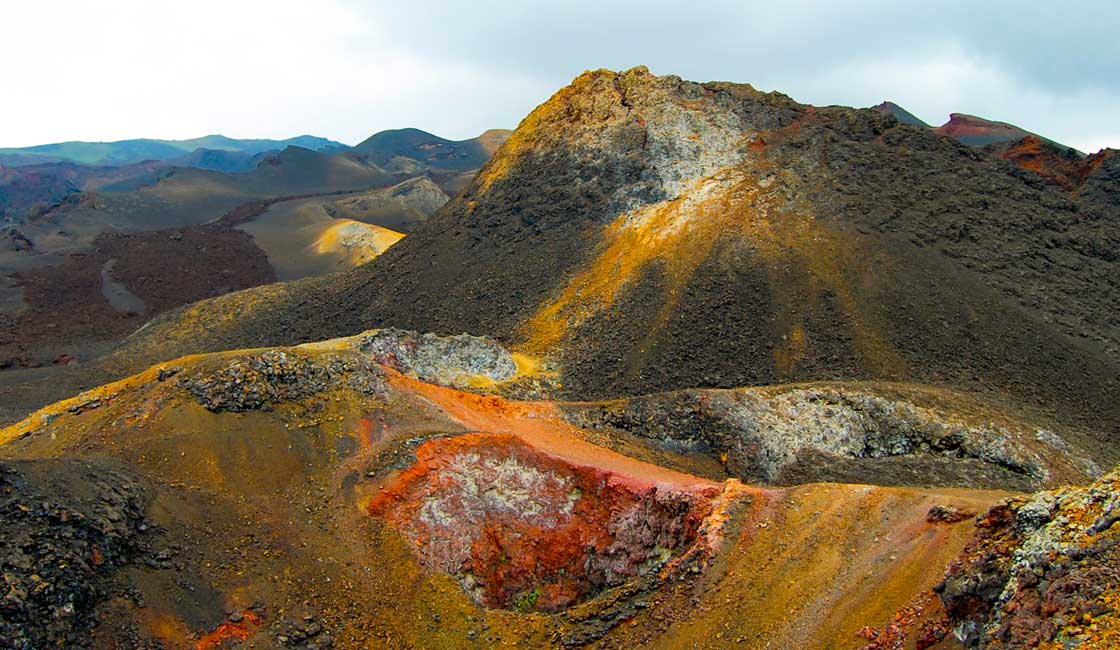
Isabela Island
The last stop the Beagle and Charles Darwin made was at Isabela Island. The largest island in the archipelago, this is where Charles realized how different certain species were. A local told Charles that many of the plants and trees on the islands, like the tortoises, were different from island to island. The significance didn’t sink in until later: he left, writing that he never dreamed that islands made of the same materials, under the same climate, at the same altitude, and only 50-60 miles apart might have such different animals.
Charles Darwin returned home and enlisted others to help him sort his specimens. It was then that many of them pointed out what Darwin had missed: each island had its own finch species. Joseph Hooker confirmed that the plant life was unique between islands, and after this point, he put together that every species he had observed varied by island (even though some were harder to spot).
The theory of evolution had already been proposed by Jean Baptiste de Lamarck, even though Darwin often gets credit for it. But what was so remarkable about Darwin’s findings was that he was able to solve the mystery of how and why evolution occurred. In 1839, he called it natural selection. He explained that the animals with the characteristics that made them best suited for their environment had the highest chance of survival, and therefore their offspring would help pass on those traits that had helped them survive. In the case of the islands, these naturally-selected individuals simply had different traits, and thus the species evolved in different directions.
The Galapagos Islands provided Charles Darwin with the subjects for his work, and his work has brought attention to the rare species of the Galapagos islands.
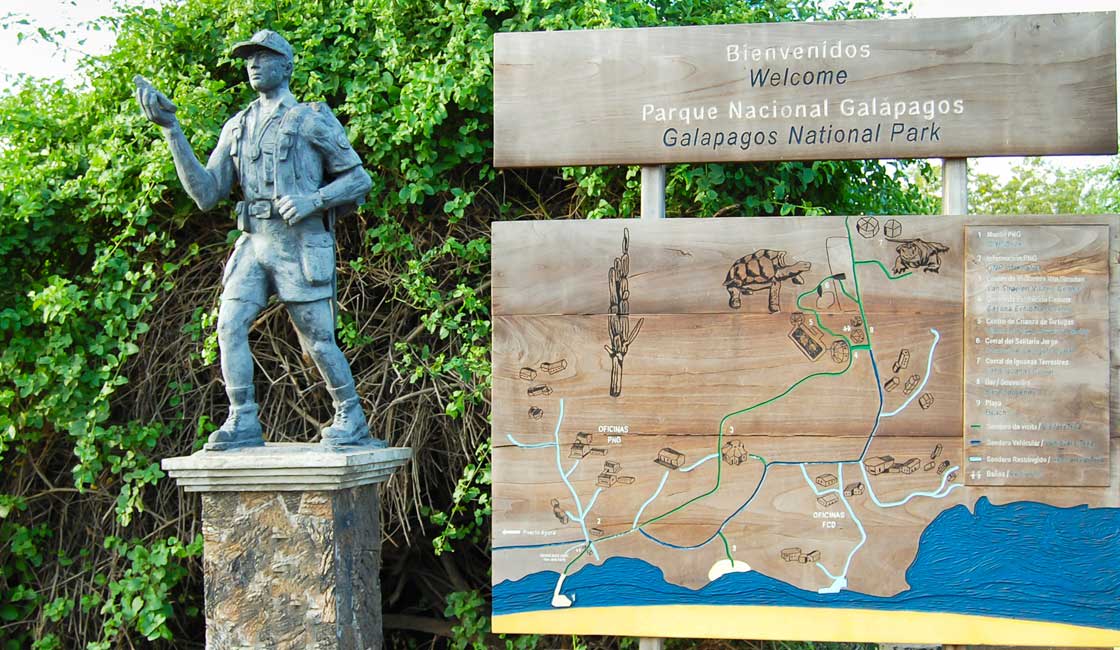
Galapagos National Park
Today tourists can visit the same islands that enabled Charles Darwin’s groundbreaking work, and witness many of the exotic species that do not exist anywhere else in the world.
The Charles Darwin Research Station on Santa Cruz island currently works on research and conservation projects, focused on protecting the terrestrial and marine ecosystems. With a team of over 100 scientists, educators, volunteers, research students and support staff, the research station has been working to create educational conservation programs, advise Ecuadorian authorities on managing the natural resources of the islands, and better understand the ecosystems to adequately manage them.
If you visit the center, you’ll have the chance to get a close-up look at the Galapagos tortoises and land iguanas, with explanations in both English and Spanish about current efforts to restore their populations.
For more information about Galapagos Conservation you can visit the Galapagos Conservatory website. For information about booking a tour to the Galapagos or a Galapagos Cruise, contact us!
While Rainforest Cruises aim to provide accurate and up-to-date information, we make no representations as to the accuracy or completeness of any information herein or found by following any link on this site. Rainforest Cruises cannot and will not accept responsibility for any omissions or inaccuracies, or for any consequences arising therefrom, including any losses, injuries, or damages resulting from the display or use of this information.




